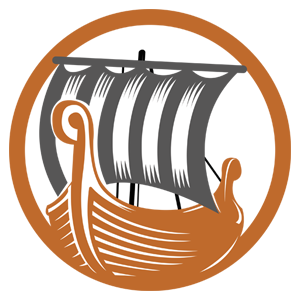How do I love thee, Colombia
Let me count the ways.
One: Visiting Colombia was my son Nick’s idea. He’d gone to Cartagena for a Triathlon and stayed in the colonial walled city. He told us it was perfect for us—charming, cultural, historical, and the Caribbean Sea to boot. It seemed a long way to go for just Cartagena, and I lucked onto a travel agency South American Travel that planned an awesome itinerary of the entire country for my husband Raphael and me. We were picked up at each destination and had outstanding local guides for almost every day of our trip.
Colombia has long been known for its reputation as being dangerous. Pablo Escobar’s horrific reign and the FARC revolutionary army’s penchant for kidnapping tourists eliminated Colombia as a tourist destination. I am happy to report Colombia has turned a corner. The President recently received a Nobel Peace Prize for brokering a peace with FARC and the mayor of Medellin has innovatively added escalators and cable cars to connect the once isolated crime ridden areas to the rest of the city. Everywhere we went we saw new infrastructure: bridges, tunnels, airports, etc. being built. The citizens are proud and optimistic and seem almost giddy with hope.
Flying from LAX directly to Bogotá on Avianca, the Colombian airlines, the flight was only 6 hours and 15 minutes. We were greeted by a white cardboard sign with Penelope Ruth Bernal printed on it. (Good thing they included the Ruth!). So cool to be picked up! Our driver dropped us off at L’Opera, a colonial hotel with beautiful, original yellow tile and pastel stone walls in La Candelaria district, one of the most ancient areas in Bogotá.

Once we arrived, we ordered Ajiaco, one of their traditional dishes. A chicken soup with three kinds of potatoes, rice, a large slice of avocado (their avocados are ginormous) and half of a corn cob. Starches anyone? Most of their traditional dishes are everything but the kitchen sink. Breakfast is always included and the breakfasts are simply scrumptious due to the great variety and quantity of fruits. Several kinds of passion fruits, guavas, papaya, and pineapple (sweet without a hint of acid) New fruits like pitahaya, a deep yellow with iguana-like swirled pointy hard protuberances outside and soft gray pudding pulp inside with black seeds. Smooth and yummy!

All the fruits were a marvel and sweet and illuminating to the tongue.
Our local guide Magda, a forty-ish, attractive young woman, picked us up promptly at 9:00 A.M. Like all our guides, Magda was bilingual, speaking English and Spanish. The Colombian Spanish accent is considered to be one of the clearest and most neutral accents in the world of Spanish. Both Raphael and I speak Spanish and soon realized this was an awesome opportunity to get semi-private lessons in Spanish, so we spoke Spanish the majority of the time. I should say we spoke the best Spanish we could and welcomed the assistance of our guides. Through our conversations, we learned that Magda was married and childless by choice, a situation evidently becoming more common in Colombia. At times, Magda would comment enthusiastically on the many tourists she saw–she said five years ago there were almost none.
At 8,660 feet above sea level, locatd on a plateau in the Andes, Bogota’s weather was misty, rainy, and cool. After viewing the local plazas and statues mostly of Simon Bolivar, the liberator of Colombia, our next stop was El Museo de Oro (Gold). The Spanish arrived in 1509, bedazzled by the golden lifestyle of the indigenous people which led to the search for El Dorado (the City of Gold) and the slaughter of the tribes. The delicacy and the artistry of the beautiful jewelry and ornaments were stunning. I so preferred these soft golden adornments to the ornate Baroque gold of the European cathedrals.

Next, Monserrate, the mountain top in the center of the city, reached by cable car or funicular at 10,000 feet overlooking the entire metropolis. The most spectacular way to view this vibrant city. Rafa managed to breathe most of the way, but welcomed the stop at a charming Antique house for food.

After a lunch of local baked goods, we returned to our hotel. That night we met with Robert Drake, an expat musician living with his Colombian girlfriend in Bogotá. We walked to a restaurant in La Candelaria, Gato Gris (Gray Cat) with many levels and rooms—almost Escher like for our first of several Pisco Sours and a yummy Colombian meal.


Penny, your descriptions of Colombia are brilliant and beautiful. They make me want to go there and I’ve never before had an inkling that I might want to visit that country. Keep traveling and writing your blog!
I’m having a ball reading your posts. And again, kudos to Raphael for the gorgeous photos.
Pitahaya looks almost like a leopard fruit inside! It’s an amazing thing to find a new exotic food in an exotic land. Thanks for taking us on your journey. One can imagine new foods like this on a distant planet.
Colombia is known for its abundance of birds and fruit–both colorful and sweet.